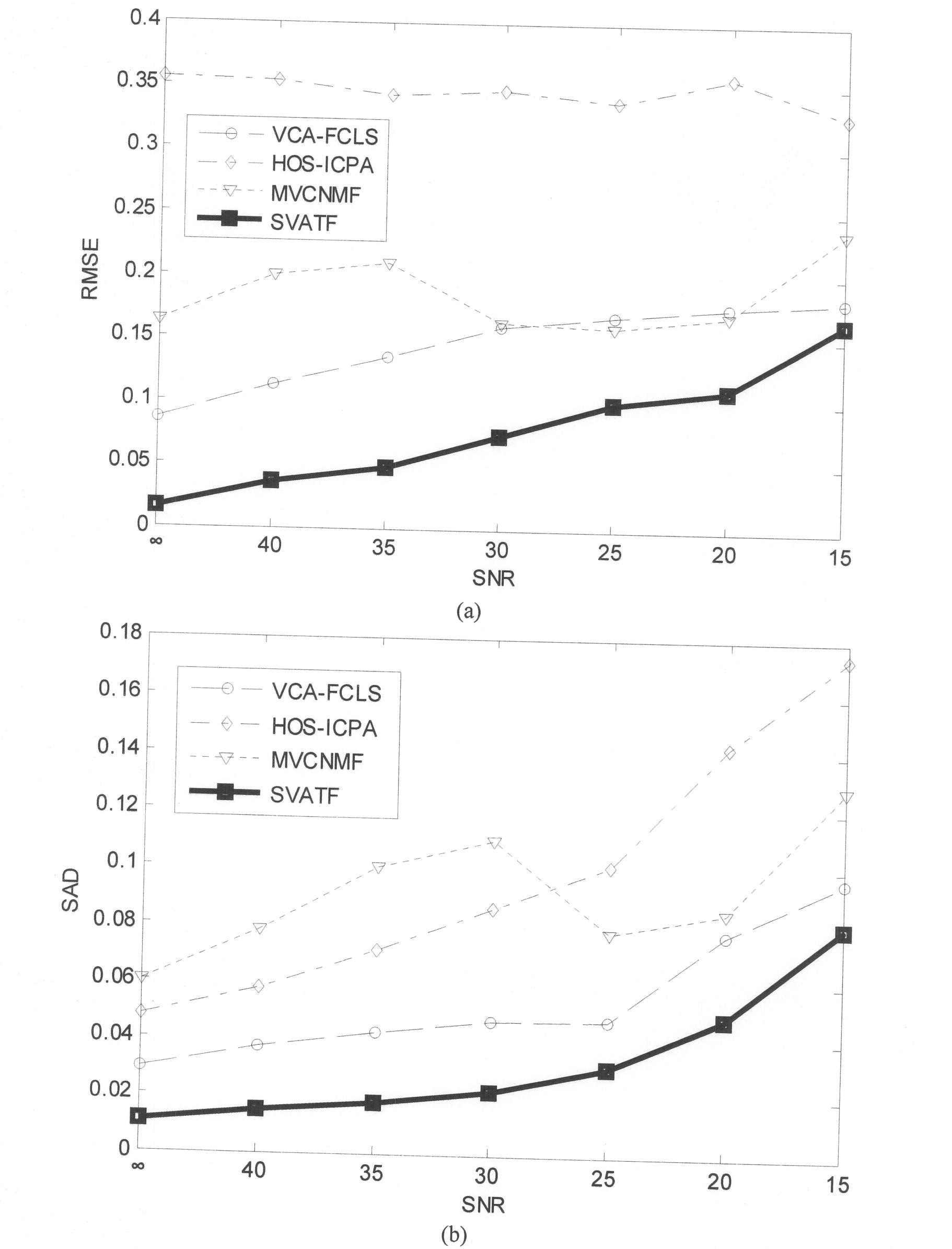Simplex triangular decomposition-based method for decomposing mixed pixels of hyperspectral remote sensing images
A technology of hyperspectral remote sensing and triangular decomposition, which is applied in the field of hyperspectral remote sensing data mixed pixel decomposition, and can solve problems such as multi-calculation time, high computational complexity, and consumption
- Summary
- Abstract
- Description
- Claims
- Application Information
AI Technical Summary
Problems solved by technology
Method used
Image
Examples
Embodiment Construction
[0180] In the following, we respectively use simulation data and actual remote sensing image data as examples to illustrate specific implementation methods.
[0181] 1 simulation data
[0182] The SVATF method proposed by the present invention is compared with the following three typical algorithms: HOS-ICPA[6], VCA[4], and MVCNMF[7]. Among them, the VCA algorithm can only obtain the spectral matrix, so we use FCLS[8] to obtain the abundance matrix after solving the spectrum, and record this method as VCA-FCLS. We use simulation data to test the performance of all the above algorithms, and use SAD and RMSE to measure the difference between the results of all algorithms and the real reference values.
[0183] Spectral Angle Distance (Spectral Angle Distance, SAD) is used to measure the degree of difference between the spectrum solved by the algorithm and the known reference spectrum, the real spectral vector a of the i-th end member i =[a i1 , a i2 ,...,a iL ] T The corre...
PUM
 Login to View More
Login to View More Abstract
Description
Claims
Application Information
 Login to View More
Login to View More - R&D
- Intellectual Property
- Life Sciences
- Materials
- Tech Scout
- Unparalleled Data Quality
- Higher Quality Content
- 60% Fewer Hallucinations
Browse by: Latest US Patents, China's latest patents, Technical Efficacy Thesaurus, Application Domain, Technology Topic, Popular Technical Reports.
© 2025 PatSnap. All rights reserved.Legal|Privacy policy|Modern Slavery Act Transparency Statement|Sitemap|About US| Contact US: help@patsnap.com



